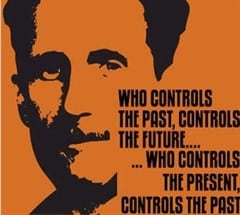
Many people have an instinctive feeling that the mainstream media do not tell them the whole story.
But few people realise quite to what extent the media are manipulated to send out a particular political message. This problem is especially acute with foreign stories because by definition readers know less about far away countries than about their own. They are therefore much more susceptible to a story being “spun” in one direction or another, especially if moral condemnation is involved: everyone enjoys the sense of being morally superior and interventionist media encourage this sentiment to justify interventionism.
A recent flagrant example was provided by a report in the Daily Mail on the Sunni Islamist insurgency in Iraq which has taken Mosul and now threatens Baghdad itself.
On 16 June 2014, the Mail carried an excited report which enthused about how even teenagers and young boys were taking up arms to defend the capital city against the Sunni militants of ISIS (The Islamic State of Iraq and the Levant).
Entitled “Baghdad’s boy army: teenagers rush to join the call to defend city from ISIS militants,” the article carried a picture of a nice looking boy, perhaps 12 years old, sitting on the ledge of a car in Baghdad and brandishing a large gun. His was the sympathetic face of a people’s army rising up to defend the US-backed government of Iraq led by Nouri al-Maliki. (The Sunnis who support ISIS previously held power in Iraq under Saddam Hussein.)
The article began:
Children are taking up arms in Iraq against the jihadist forces threatening to march on Baghdad in the latest worrying development in the crisis-hit country. Images coming out of Iraq today show youths brandishing automatic rifles as they march with the militias forming in the capital to fight back against the forces of ISIS. Similar pictures also emerged from Basra, Iraq’s second-largest city, 340 miles south-east of Baghdad. Prime Minister Nuri al-Maliki had announced the Iraqi government would arm and equip civilians who volunteer to fight, and so far thousands have signed up.
However, someone must have realised that this was quite the wrong message to give out about a Western-backed government. The use of child soldiers is expressly forbidden by the International Criminal Court and it formed the basis for its flagship prosecution of Thomas Lubanga, even though he was in fact suspected of far worse crimes.
For by the next morning, the entire tone of the article had been turned around 180 degrees. Instead of implicitly praising the brave youngsters who were joining their fathers and uncles in arms, the article did a U-turn and branded the ISIS militants evil monsters because they used child soldiers.
The new article (with the same URL) was now entitled “The boy jihadis: Sickening new images reveal gun-toting children as young as eight watching ISIS execution.”
Gone was all mention of the brave boy army in Baghdad: instead, there was, buried inside the text, a discreet mention of the fact that child soldiers were being used on both sides.
Instead, the piece now began:
Shocking video emerged today showing armed militant children – some no older than eight – proudly overseeing the execution of a prisoner in cold blood as jihadi fighters continue their ruthless drive to topple Iraq. Footage shows a man surrounded by a baying mob of masked insurgents reportedly in the city of Mosul which was taken by ISIS militants last week. Among the separatists, a number of children are seen brandishing automatic weapons as they watch on unmoved just a few feet away.
The high resolution picture of the nice-looking looking boy in Baghdad was replaced with grainy pictures of Islamists and what appeared to be a young boy fighter among them.
The different versions of this article are not different articles: the earlier versions have simply disappeared – “dropped down the memory hole”, as George Orwell would have written in 1984. The original versions can be retrieved only if someone has happened to cut and paste them on a blog. All versions (the article has again been amended again since 17 June, when the second version was posted) have the same original URL entitled: “Baghdad teens join fight … etc.”
The way it is possible, within the “same” article, to adopt two completely contradictory moral positions, and get away with it, shows how extremely volatile journalistic ethics are and how susceptible the reading public is to fairy tales about goodies and baddies – even if the roles are suddenly reversed.
Reprinted with permission of the Centre for the Study of Interventionism.
